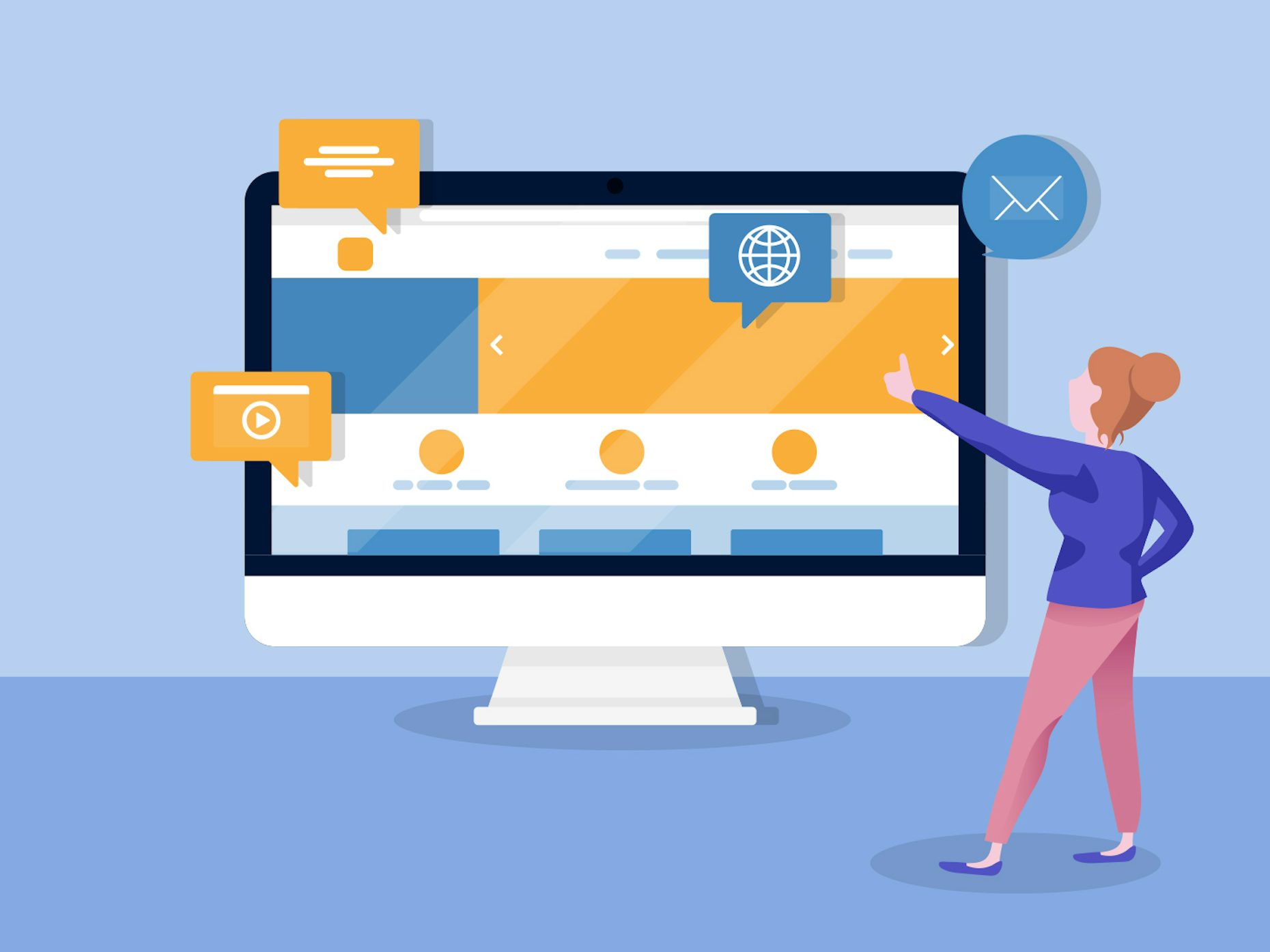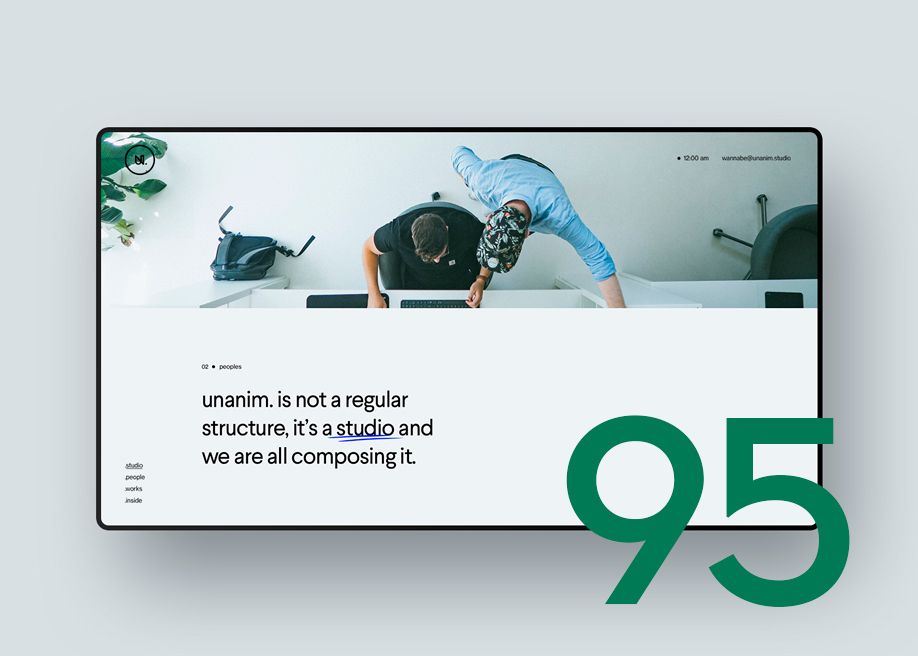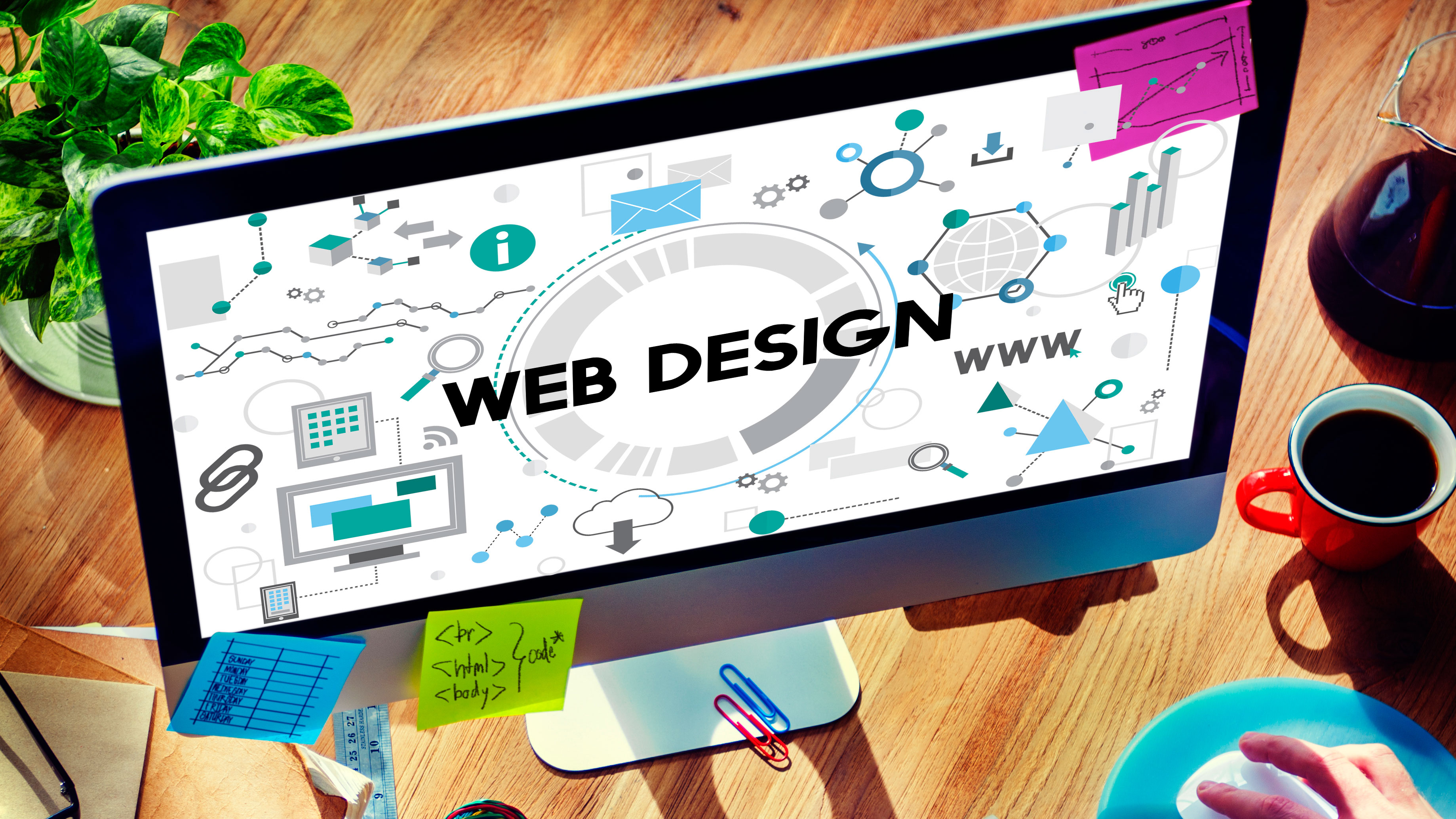All Categories
Featured
Table of Contents
- – Web Design Museum 1991 – 2006 Tips and Tricks:
- – Figma: The Collaborative Interface Design Too...
- – Top Web Design Agencies Ranked - 2022 Reviews...
- – Why Web Design Is Dead - - Ux Magazine Tips a...
- – Webpage Design (Article) - Further Learning -...
- – The Top Ecommerce, Website Design ... - Seatt...
- – Web Design Services - Verizon Small Business...
- – Redtree Web Design - Pittsburgh Tips and Tri...
- – Web Design & Seo By Acs - Syracuse Web Desig...
- – Learn Responsive Design - Web.dev Tips and T...
- – Web Designer News - The Best Curated News Fo...
Web Design Museum 1991 – 2006 Tips and Tricks:
Quick summary Functionality and the utility, not the visual style, identify the success or failure of a site. Since the visitor of the page is the only individual who clicks the mouse and therefore decides everything, user-centric style has actually established as a basic approach for effective and profit-oriented web style - web design frederick md.
and the utility, not the visual style, identify the success or failure of a website. Since the visitor of the page is the only individual who clicks the mouse and for that reason chooses everything, user-centric design has actually become a basic method for effective and profit-oriented web design. After all, if users can't use a function, it may also not exist.
g. where the search box must be placed) as it has currently been carried out in a number of short articles; instead we focus on the methods which, utilized appropriately, can lead to more sophisticated design choices and streamline the procedure of perceiving provided details. Please see that you might be interested in the usability-related articles we have actually published before: Principles Of Good Site Design And Effective Website Design Guidelines, In order to use the concepts properly we initially require to comprehend how users connect with websites, how they think and what are the standard patterns of users' habits.
Figma: The Collaborative Interface Design Tool. Tips and Tricks:
Visitors look at each brand-new page, scan some of the text, and click the first link that captures their interest or vaguely resembles the thing they're looking for. In truth, there are big parts of the page they do not even look at. Many users browse for something intriguing (or useful) and clickable; as quickly as some promising prospects are discovered, users click.
If a page offers users with high-quality material, they are prepared to jeopardize the material with advertisements and the design of the website. This is the reason why not-that-well-designed sites with top quality content acquire a lot of traffic over years. Content is more crucial than the style which supports it.

Users don't check out, they scan. Notification how "hot" locations abrupt in the middle of sentences. This is normal for the scanning procedure. Extremely easy concept: If a website isn't able to meet users' expectations, then designer stopped working to get his task done properly and the company loses money. The higher is the cognitive load and the less intuitive is the navigation, the more ready are users to leave the site and search for alternatives.
Top Web Design Agencies Ranked - 2022 Reviews - Clutch.co Tips and Tricks:
Neither do they scan webpage in a linear fashion, going sequentially from one website area to another one. Instead users satisfice; they select the first sensible choice. As quickly as they find a link that looks like it might lead to the goal, there is a really excellent chance that it will be immediately clicked.
It does not matter to us if we understand how things work, as long as we can utilize them. If your audience is going to act like you're creating billboard, then design great signboards." Users want to be able to manage their internet browser and depend on the consistent information discussion throughout the site.
If the navigation and site architecture aren't instinctive, the variety of concern marks grows and makes it harder for users to understand how the system works and how to obtain from point A to point B. A clear structure, moderate visual hints and easily identifiable links can assist users to discover their path to their goal.
Why Web Design Is Dead - - Ux Magazine Tips and Tricks:

Because users tend to check out websites according to the "F"-pattern, these 3 declarations would be the very first elements users will see on the page once it is packed. The design itself is easy and user-friendly, to understand what the page is about the user needs to search for the response.
When you have actually achieved this, you can interact why the system is useful and how users can gain from it. People won't utilize your website if they can't discover their method around it. 2. Don't Squander Users' Patience, In every project when you are going to provide your visitors some service or tool, attempt to keep your user requirements very little.
Novice visitors are ready to, not filling long web kinds for an account they might never use in the future. Let users explore the website and discover your services without forcing them into sharing private data. It's not affordable to force users to enter an email address to test the feature.
Webpage Design (Article) - Further Learning - Khan Academy Tips and Tricks:
And that's what you desire your users to feel on your web site. The registration can be done in less than 30 seconds as the type has horizontal orientation, the user doesn't even need to scroll the page.
A user registration alone is adequate of an impediment to user navigation to cut down on inbound traffic. Handle To Focus Users' Attention, As sites provide both fixed and vibrant material, some aspects of the user interface attract attention more than others do.
Focusing users' attention to specific areas of the website with a moderate use of visual aspects can help your visitors to obtain from point A to point B without thinking of how it really is supposed to be done. The less enigma visitors have, the they have and the more trust they can develop towards the company the website represents.
The Top Ecommerce, Website Design ... - Seattle Tips and Tricks:
4. Aim For Function Exposure, Modern website design are typically criticized due to their technique of guiding users with visually appealing 1-2-3-done-steps, big buttons with visual results and so on. However from the style perspective these aspects actually aren't a bad thing. On the contrary, such as they lead the visitors through the site material in an extremely easy and user-friendly way.
The site has 9 main navigation options which are noticeable at the first glance. The option of colors may be too light, though. is a fundamental principle of successful interface style. It does not truly matter how this is attained. What matters is that the material is well-understood and visitors feel comfortable with the way they connect with the system.
Rather a cost: just what visitors are looking for. An optimum option for effective writing is touse short and succinct expressions (come to the point as quickly as possible), use scannable layout (classify the material, use numerous heading levels, utilize visual aspects and bulleted lists which break the circulation of consistent text blocks), usage plain and objective language (a promo doesn't require to sound like advertisement; provide your users some sensible and objective reason why they ought to utilize your service or stay on your website)6.
Web Design Services - Verizon Small Business Essentials Tips and Tricks:
Users are seldom on a website to delight in the style; in addition, for the most part they are searching for the information in spite of the style - web design frederick md. Pursue simpleness rather of complexity. From the visitors' viewpoint, the best website style is a pure text, without any advertisements or more content obstructs matching precisely the question visitors utilized or the content they've been looking for.
Finch plainly presents the information about the site and offers visitors a choice of options without overcrowding them with unneeded material. 7. Don't Be Scared Of The White Area, Really it's really difficult to overstate the importance of white space. Not just does it help to for the visitors, but it makes it possible to view the info presented on the screen.
Complex structures are harder to read, scan, analyze and work with. If you have the option in between separating 2 style sectors by a visible line or by some whitespace, it's usually much better to use the whitespace option. (Simon's Law): the much better you handle to supply users with a sense of visual hierarchy, the easier your material will be to perceive.
Redtree Web Design - Pittsburgh Tips and Tricks:
The same conventions and guidelines must be used to all elements.: do the most with the least amount of cues and visual elements. Clearness: all parts need to be developed so their meaning is not unclear.
Conventions Are Our Friends, Standard design of website components doesn't result in a boring web site. It would be an usability nightmare if all websites had various visual discussion of RSS-feeds.
comprehend what they're anticipating from a site navigation, text structure, search placement etc. A normal example from use sessions is to equate the page in Japanese (presuming your web users do not know Japanese, e. g. with Babelfish) and supply your use testers with a job to discover something in the page of different language.
Web Design & Seo By Acs - Syracuse Web Design - Google ... Tips and Tricks:
Steve Krug recommends that it's much better to, however take benefits of conventions when you do not. 10. Test Early, Test Typically, This so-called TETO-principle ought to be used to every web style job as usability tests frequently supply into considerable problems and issues associated with an offered layout. Test not far too late, not too little and not for the incorrect factors.
Some essential indicate bear in mind: according to Steve Krug, and testing one user early in the task is better than testing 50 near completion. Accoring to Boehm's very first law, mistakes are most regular during requirements and design activities and are the more pricey the later they are gotten rid of.
That means that you develop something, test it, repair it and then test it once again. There might be problems which haven't been discovered throughout the preliminary as users were practically obstructed by other issues. functionality tests. Either you'll be indicated the problems you have or you'll be pointed to the lack of major design flaws which is in both cases an useful insight for your task.
Learn Responsive Design - Web.dev Tips and Tricks:

This holds for designers too. After you have actually worked on a website for couple of weeks, you can't observe it from a fresh perspective any longer. You know how it is developed and therefore you understand precisely how it works you have the wisdom independent testers and visitors of your website would not have.
It can be connected to other areas such as graphic design, user experience, and multimedia arts, however is more aptly seen from a technological viewpoint. It has actually become a big part of people's daily lives. It is hard to envision the Web without animated graphics, different designs of typography, background, videos and music.

Throughout 1991 to 1993 the World Wide Web was born. Text-only pages might be seen using a simple line-mode browser. In 1993 Marc Andreessen and Eric Bina, developed the Mosaic web browser. At the time there were several web browsers, nevertheless most of them were Unix-based and naturally text heavy. There had actually been no integrated approach to graphic design aspects such as images or noises.
Web Designer News - The Best Curated News For Designers Tips and Tricks:
The W3C was developed in October 1994 to "lead the Internet to its full capacity by establishing typical protocols that promote its development and guarantee its interoperability." This prevented any one business from monopolizing a propriety internet browser and programs language, which might have modified the effect of the World Wide Web as a whole.
As this has actually taken place the technology of the web has actually likewise proceeded. There have actually also been significant changes in the method individuals utilize and access the web, and this has actually changed how sites are designed. Given that the end of the internet browsers wars [] brand-new web browsers have been released. A lot of these are open source indicating that they tend to have quicker advancement and are more encouraging of new standards.
Learn more about Lovell Media Group LLC or TrainACETable of Contents
- – Web Design Museum 1991 – 2006 Tips and Tricks:
- – Figma: The Collaborative Interface Design Too...
- – Top Web Design Agencies Ranked - 2022 Reviews...
- – Why Web Design Is Dead - - Ux Magazine Tips a...
- – Webpage Design (Article) - Further Learning -...
- – The Top Ecommerce, Website Design ... - Seatt...
- – Web Design Services - Verizon Small Business...
- – Redtree Web Design - Pittsburgh Tips and Tri...
- – Web Design & Seo By Acs - Syracuse Web Desig...
- – Learn Responsive Design - Web.dev Tips and T...
- – Web Designer News - The Best Curated News Fo...
Latest Posts
Web Design Software:
Top Web Design Agencies Ranked - 2022 Reviews - Clutch.co Tips and Tricks:
Top Web Design Courses Online - Updated [April 2022] - Udemy Tips and Tricks:
More
Latest Posts
Web Design Software:
Top Web Design Agencies Ranked - 2022 Reviews - Clutch.co Tips and Tricks:
Top Web Design Courses Online - Updated [April 2022] - Udemy Tips and Tricks: